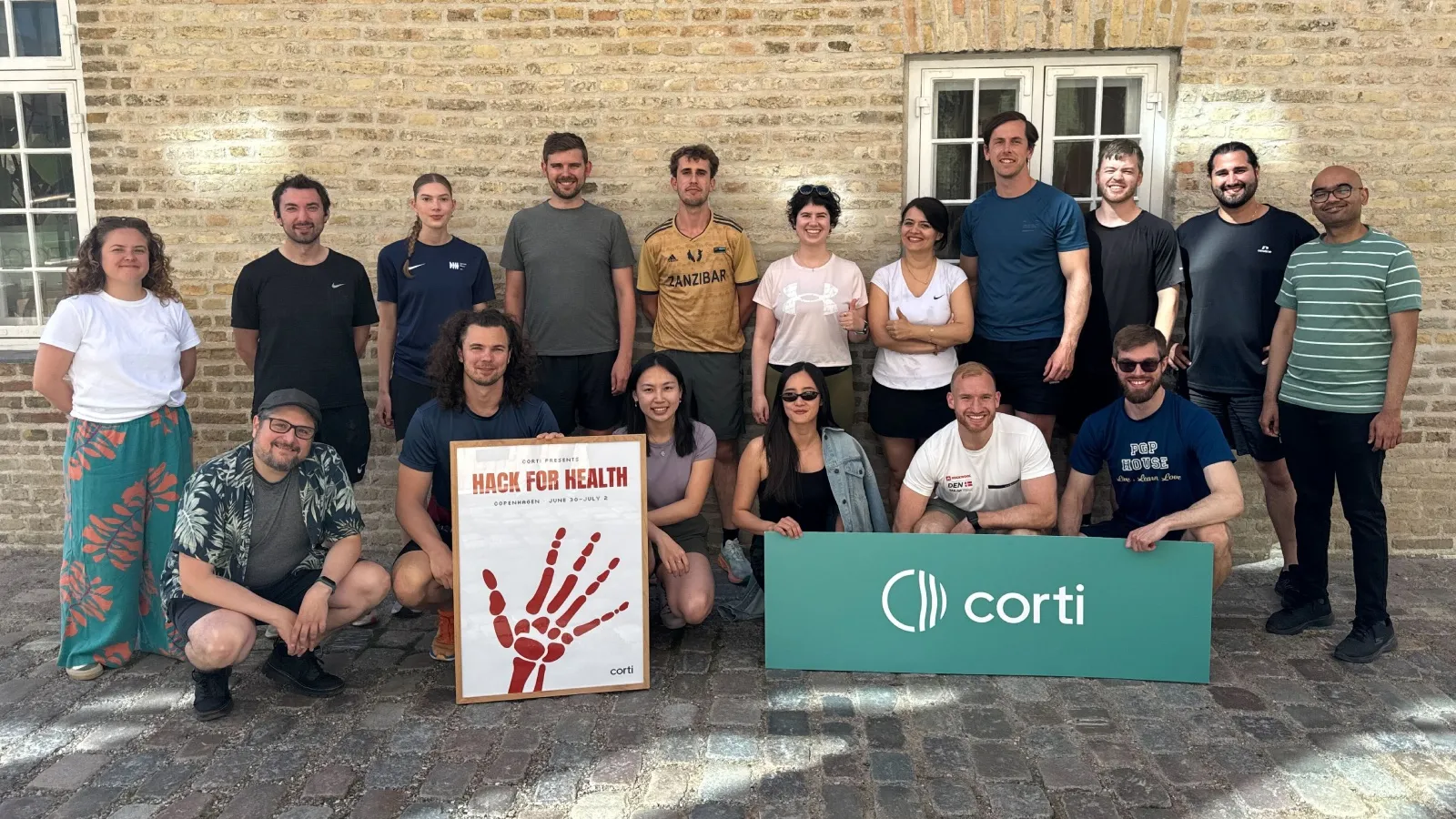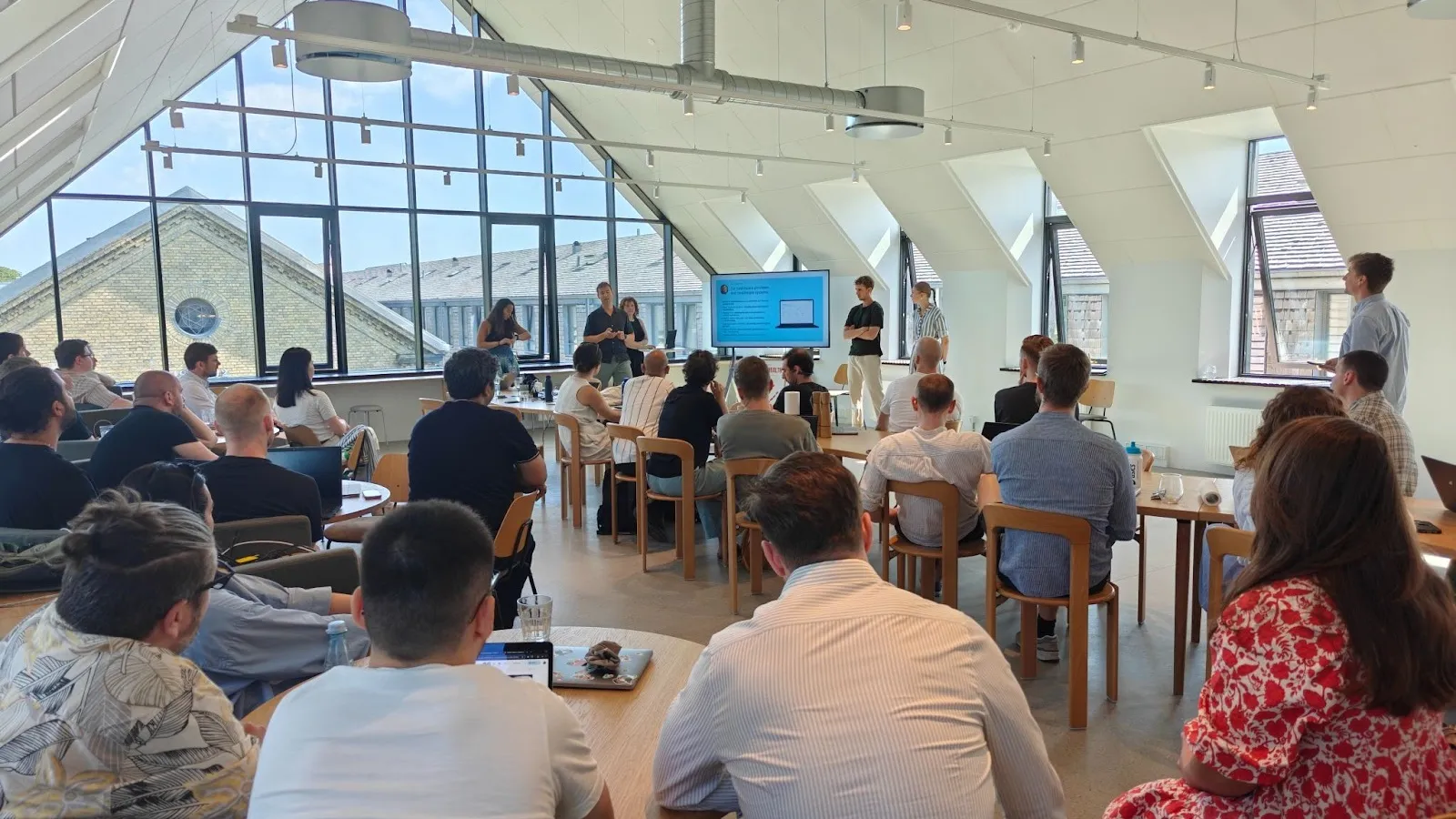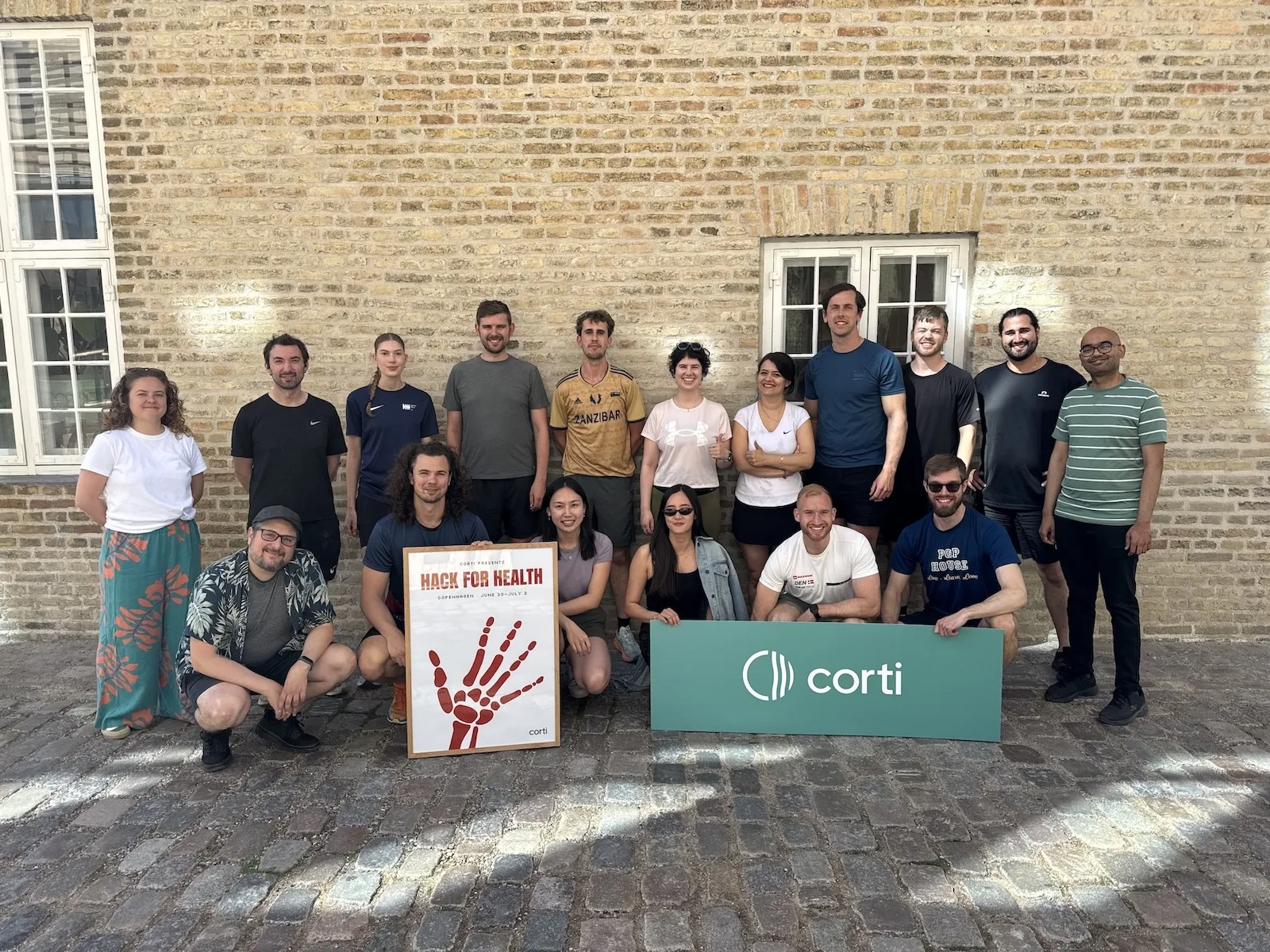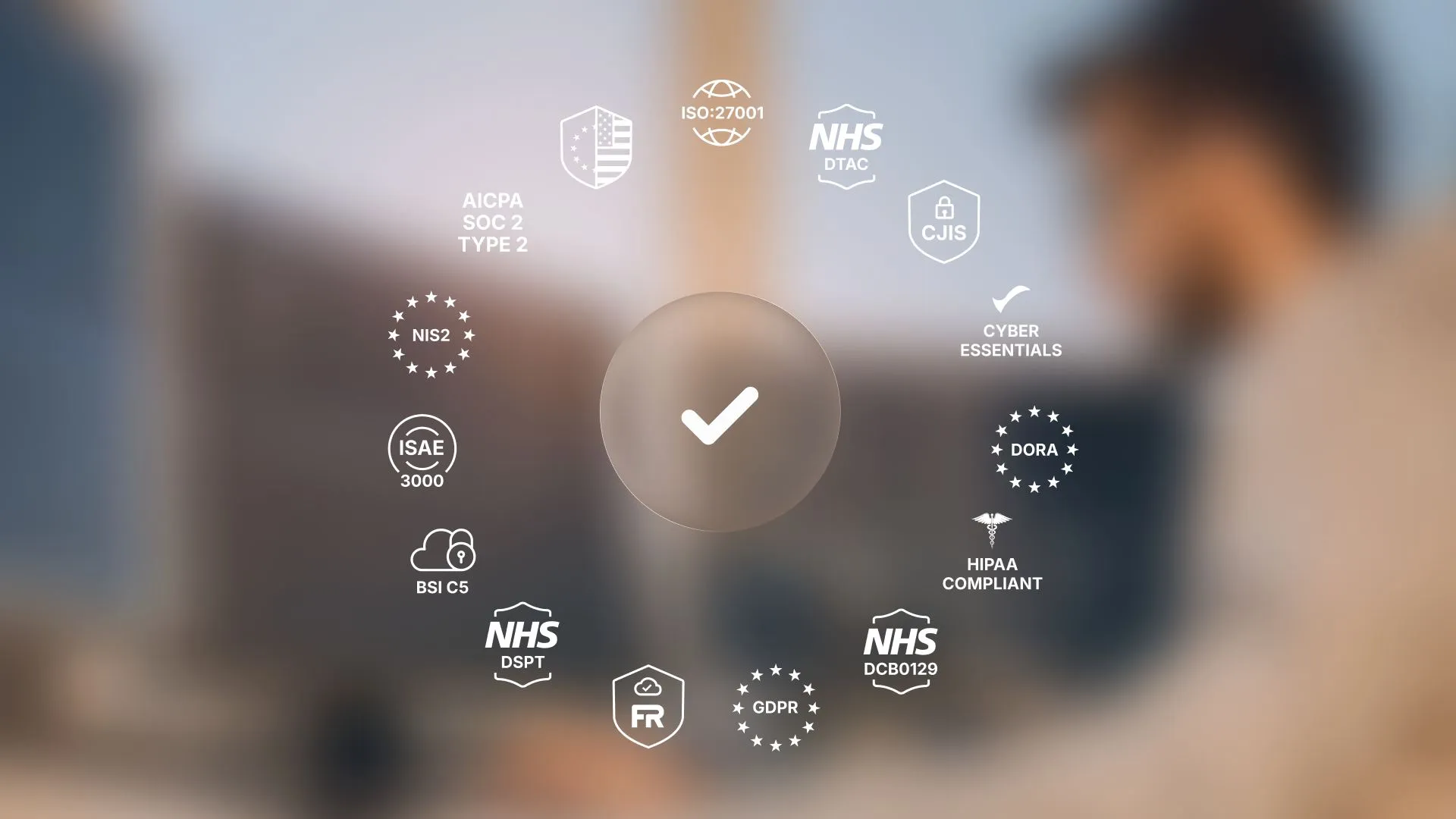What happens when you open the toolbox: Corti hackathon recap

Last week, we hosted a developer hackathon at Corti, focused on one core challenge: build useful, clinically-relevant tools using our healthcare API infrastructure.
The result? A range of fast, creative builds that showed what’s possible when the right people have access to the right foundation.
Across 48 hours, developers, designers, and ML specialists teamed up to build working tools for real-world healthcare use cases. Some focused on triage, others on documentation, patient engagement, or decision support. Most teams approached their projects from the patient perspective. And every team used Corti’s API to power something that could work inside a real clinical workflow.
Why we run hackathons
At Corti, we build infrastructure for healthcare teams. That means creating APIs that can be used in everything from EHR integrations to voice documentation and coding support.
Hackathons let us test that infrastructure in new hands. They help us understand how developers interact with our tooling, where the opportunities are, and how our platform performs when it’s pushed outside expected paths.
It’s also how we meet great builders, some of whom may end up joining us.

What developers built with Corti’s API
Over two days, teams used the Corti API to power solutions like the following:
A Health-ePassport app, enabling patients to record, translate, and share their full medical history anywhere in the world, so doctors can make better-informed decisions even without EHR access.
A personal assistant in MinSP, helping elderly patients understand care instructions by answering questions, reading text aloud, and providing tailored guidance based on consultation transcripts.
A symptom capture companion app, allowing patients to describe symptoms by voice, then summarizing and structuring them into notes that support GPs with clearer, faster documentation.
NurseAssist, an intelligent nurse call system that lets patients speak their needs directly, categorizes urgency, and delivers context so nurses can prioritize effectively.
What stood out was how quickly teams moved past basic demo logic and into building structure, flow, and value. That’s the benefit of strong infrastructure: it gives developers a head start.

Why healthcare needs better infrastructure
The future of healthcare will be built from many small, specialized tools, not one-size-fits-all systems. That includes everything from documentation automation to EHR-connected apps to tools that support patients before and after their visit.
To make those tools work, developers need APIs designed specifically for healthcare: secure, compliant, real-time, and aligned with clinical workflows. That’s what Corti builds.
Want to build on the Corti API?
Whether you’re a startup, enterprise team, or curious developer, the Corti API is built to support high-trust use cases from day one.
Thanks to everyone who joined, tested, built, and shared ideas. We’ll see you at the next one.



%20(3).png)
